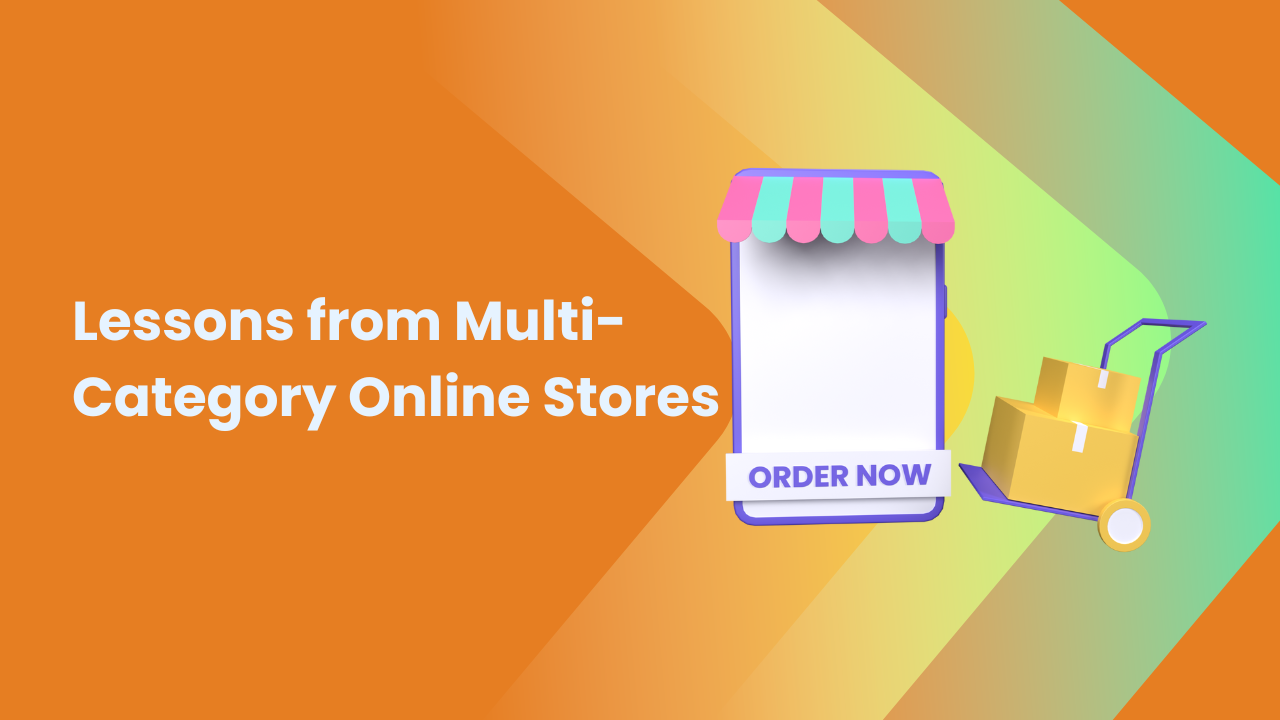Share this Article
Creating an e-commerce product listing that attracts and converts potential buyers is one of the most crucial elements in building a successful online business. A well-structured and persuasive product listing not only helps your items stand out but also plays a key role in converting website visitors into paying customers. For sellers in Nepal, where e-commerce is gaining momentum in 2025, it’s vital to create a product listing that resonates with local consumers while meeting global standards.
As an e-commerce entrepreneur, you need to think beyond just listing your product. You must optimize every part of your listing to ensure that it grabs attention, builds trust, and motivates customers to make a purchase. Whether you’re selling electronics, clothing, or handmade products, here’s a comprehensive guide to creating the perfect product listing that will help you maximize your sales in Nepal and beyond.
1. Craft an Eye-Catching and Informative Product Title
The product title is the first impression customers have of your product. It’s the very first thing that people see when they search for a product online, and it can make or break their decision to click through to your listing. A good product title must be clear, concise, and contain key information about the product, as well as relevant keywords to help with search engine optimization (SEO).
In Nepal, a large number of customers rely on online search engines like Google, or social media platforms like Facebook and Instagram, to discover new products. The title of your product listing needs to incorporate keywords that resonate with your target audience. For example, if you’re selling a winter jacket, you should include terms like “waterproof,” “warm,” and “Nepal” to improve local searchability.
For a title to be compelling:
- Focus on the main product first (e.g., “Winter Jacket”).
- Include key features (e.g., “Waterproof” or “Eco-Friendly”).
- Add any relevant specifications (e.g., size, color, or quantity).
- Mention your target audience, if needed (e.g., “Men’s Jacket” or “For Kathmandu Winters”).
Example: “Men’s Waterproof Winter Jacket – Warm, Eco-Friendly – Available in Medium and Large (Nepal).”
It’s essential to balance clarity and searchability. Avoid overstuffing the title with unnecessary keywords, which can make it look cluttered and confuse both customers and search engines.
2. Write a Persuasive and Detailed Product Description
Once the title grabs the customer's attention, the product description takes over to convert interest into action. A compelling product description tells the customer not just what the product is, but why they need it. In Nepal, where online shoppers may be more cautious, a product description should eliminate doubts, clearly explaining the product’s benefits and how it will solve the customer’s problems.
In writing a description, there are a few key elements to include:
- Product benefits: Why should customers buy this product? How does it solve a problem or improve their life?
- Features: What makes your product stand out from the competition? Be specific about material, design, or functionality.
- Clear and concise information: Avoid unnecessary jargon. Your description should be easy to understand and informative.
- Local relevance: For the Nepali market, it’s important to address local conditions or requirements, like weather, geography, or daily challenges. For instance, if you’re selling winter gear, explain how the product is perfect for Nepal’s chilly mountain evenings or Kathmandu’s unpredictable weather.
A well-structured description should:
- Start with a catchy introduction that grabs attention.
- Provide a brief overview of the product.
- Go deeper into specific features and benefits.
- Explain how it stands out from competitors.
- Offer instructions on how the product can be used, if applicable.
Example: “Introducing the Men’s Waterproof Winter Jacket, your perfect companion for the cold, rainy winters in Nepal. This jacket is designed to keep you warm and dry even in the most unpredictable weather. Made from eco-friendly materials, this jacket offers a comfortable fit with insulation to protect you from the cold while keeping you stylish. Whether you're trekking in the mountains or navigating Kathmandu's busy streets, this jacket ensures you stay warm and look great. Available in Medium and Large sizes, it’s built to last through Nepal’s harsh winters.”
3. Use High-Quality Images That Showcase the Product
When shopping online, customers can’t physically touch or try the product, so visuals are extremely important. High-quality product images are essential for attracting and convincing customers to make a purchase. In Nepal, where people may still be skeptical about buying online, your product images must build trust and convey professionalism. A blurry or poorly lit photo may make your product seem cheap or untrustworthy.
To ensure that your images stand out:
- Show multiple angles: Display the product from various sides to give customers a complete view.
- Use good lighting: Clear, well-lit photos help highlight the details and quality of the product.
- Zoom capability: Allow customers to zoom in on the images to examine details closely.
- Lifestyle shots: If possible, include images of the product being used in real-life scenarios. For example, show someone wearing the jacket while hiking in the mountains or walking in the streets of Kathmandu. This helps customers visualize how the product fits into their lives.
The more visual context you provide, the better the chance your customers will feel confident in making a purchase.
4. Make Your Pricing Transparent and Competitive
Pricing is a pivotal aspect of your product listing. For e-commerce businesses in Nepal, where price sensitivity is often a factor, offering competitive pricing can play a large role in converting visitors to buyers. Customers expect clarity when it comes to pricing, and any hidden costs such as taxes, shipping fees, or handling charges should be disclosed upfront.
In addition to the price, if you're running any promotions, discounts, or sales, highlight these as well. Showing the original price alongside the discounted price is an effective way to make customers feel like they're getting a great deal.
For example:
- Original Price: NPR 3,500
- Sale Price: NPR 2,800 (Save 20%)
Action Steps:
- Ensure your price is competitive within the Nepali market.
- Include shipping fees and taxes in the price to avoid any surprises.
- If you offer discounts, display them clearly to attract customers.
5. Leverage Bullet Points for Key Features
Many customers prefer skimming through key information quickly before diving into the full details. Bullet points are an excellent way to summarize the most important features of your product in an easy-to-read format. By listing key attributes like material, size, and special features in bullet points, you can ensure that busy shoppers can quickly grasp what your product offers.
Example: Key Features:
- Made with eco-friendly, waterproof material.
- Insulated lining for warmth in cold temperatures.
- Available in black and navy colors.
- Ideal for Kathmandu’s chilly evenings and outdoor activities.
- Machine washable for easy care.
Bullet points make it easier for customers to get the essential information in a fraction of a second, which increases the chances of a purchase.
6. Include Customer Reviews and Ratings
Customer reviews are one of the most important elements of a product listing. Positive feedback from previous buyers helps build trust and reassures potential customers that the product is of good quality. In Nepal, where online shopping might still be a newer experience for some, reviews are incredibly valuable in boosting credibility.
Ask previous buyers to leave reviews by:
- Sending a follow-up email after the purchase.
- Offering incentives like discounts for leaving reviews.
- Responding to both positive and negative reviews to show that you care about customer feedback.
Example: Customer Reviews:
- “Perfect for Kathmandu winters! Warm, stylish, and waterproof. Highly recommend it!” – Sita, Kathmandu (⭐⭐⭐⭐⭐)
- “It fits well but took longer than expected to arrive.” – Anil, Pokhara (⭐⭐⭐⭐)
7. Provide Detailed Size and Fit Information
When selling products like clothing or accessories, providing accurate size charts is crucial. In Nepal, where sizes may vary slightly from international standards, a well-detailed size guide can help reduce returns and ensure customer satisfaction. Make sure to include measurements in both inches and centimeters, and mention any specific fit details, such as if the product runs large or small.
Example: Size Chart:
- Medium: Chest 38-40 inches (97-102 cm), Waist 30-32 inches (76-81 cm)
- Large: Chest 41-43 inches (104-109 cm), Waist 33-35 inches (84-89 cm)
8. Create a Compelling Call-to-Action (CTA)
The CTA is what pushes customers to take the final step—making a purchase. Your CTA should be strong, clear, and persuasive. For Nepali customers, who may be more hesitant about online shopping, creating a sense of urgency or exclusivity can be a powerful motivator.
Examples of strong CTAs:
- “Buy Now – Limited Stock!”
- “Order Today for Fast Delivery in Kathmandu!”
- “Add to Cart and Get Free Shipping”
9. Offer Clear Payment and Shipping Information
For online customers in Nepal, transparency around payment options and shipping is essential. Clearly state your payment methods—whether it's cash on delivery, digital wallets, or credit cards. Shipping details should also be clear: offer estimated delivery times for different regions, and be transparent about any extra costs like handling or delivery fees.
Example:
- Payment Options: Cash on Delivery, Digital Wallets (e.g., eSewa, Khalti)
- Estimated Delivery: 2-5 days within Kathmandu, 5-7 days for other cities.
- Return Policy: Free returns within 7 days if the product is unused.
10. Optimize for Search Engines (SEO)
SEO is crucial for ensuring that your product listing gets discovered by potential customers. Use relevant keywords in your product title, description, and bullet points to increase your chances of ranking higher in search engine results. Tools like Google Keyword Planner can help you find the best keywords for your product category.
Pro Tip: Use location-specific keywords (e.g., “Best laptop in Kathmandu” or “Sasto Smartphone in Nepal”) to target Nepali consumers effectively.
Conclusion
Creating a product listing that sells is not an overnight task—it’s a comprehensive process that requires careful planning and optimization. By writing compelling titles and descriptions, showcasing high-quality images, and implementing strategic SEO practices, you can significantly increase your chances of converting site visitors into loyal customers. Whether you're selling products in Nepal or globally, a perfect product listing requires attention to detail, creativity, and a deep understanding of customer behavior. By following these steps, you can create an irresistible product listing that not only stands out but also drives sales in the ever-growing e-commerce market in Nepal.
Categories:
E-commerce Tips & Tutorials
Tags:
SellMoreOnline







